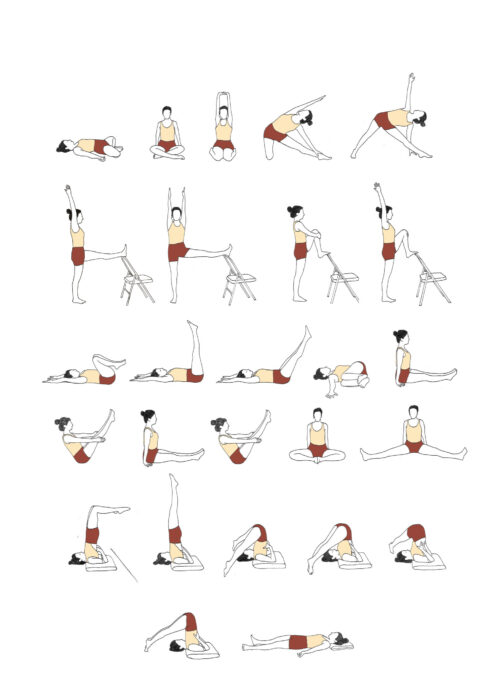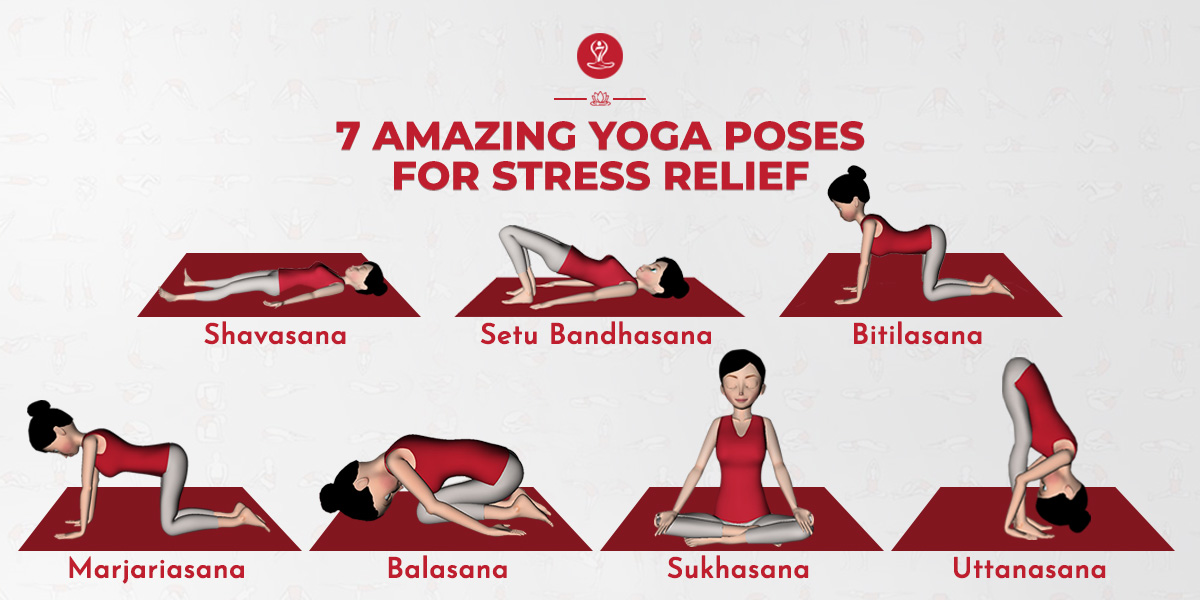
It is easy to wonder if you are doing the right poses when you start yoga. It is possible to worry about how you do a pose. This could make it difficult to practice yoga correctly. Instead of focusing on your postures, try to build a strong connection between the body and mind. These tips can help you get the best poses possible and avoid discomfort during your practice.
It is important to arrive on time in order to reap the full benefits of your yoga class. Trying to rush into a class can bring anxiety. New students frequently admit feeling nervous before their first yoga class. Running late can only make the anxiety and discomfort worse. It's better to arrive earlier than expected. This will allow you to settle in, find a restroom, and acclimate to the energy of the room. Ask a teacher for guidance if you're not sure how long it will be.

Be prepared for your first session of yoga. You need to be there early to ensure you get a good spot. It is also important to practice beginner friendly poses. Avoid having a heavy meal prior to class. It may make it uncomfortable for your stomach due to the intense movement. You should also avoid eating large meals in the days leading up to your class. Moving around too much can cause discomfort. You should consult your doctor if stomach discomfort is a concern.
Respect your teacher. Yoga instructors can help correct you in your poses. While hands-on instruction is very helpful, you should keep in mind that it's a personal practice, and every student's goals and abilities will vary. You can handle this by remembering to have fun and to laugh when you slip up in poses or get stuck with difficult poses. Don't be discouraged if a yoga teacher corrects your posture. It's part of the process and you should be enjoying the process.
Yoga classes can be intimidating for beginners. Before you sign up for a class, find out what the most common poses are. Practice them only after you have a good understanding of the name of each one. You can instead look at photos and see the names of the poses. Once you have an idea of the hardest ones, you can then choose which ones to do. Once you've found the right spot for you, you can move onto the next level.

It is important to recognize that yoga can be hard for beginners. Do not expect to be able to master it immediately. If you're new to yoga, it may take some time. The most important thing to remember is that you're learning a new skill, so be patient. Once you do that, it will be easier to concentrate on the task at hand. An instructor in yoga will guide you through the process of creating a practice that is successful.
FAQ
Are you a cardio-exercise fan?
Cardiovascular exercise is a great way to improve your cardiovascular health. It improves blood flow, strengthens your heart muscle and increases stamina.
Cardiovascular exercise includes running, biking, hiking, swimming, tennis, basketball, soccer, volleyball, football, etc.
Cardio exercises should be avoided at high intensity levels. This could result in injury.
The cardiovascular exercise should only be performed if you feel good.
Do not push yourself to the limit. In this way, you may injure or even kill yourself.
Warm up is the best way to start cardiovascular exercise. Gradually increase the intensity.
Listen to your body. You should stop immediately if you feel any pain while doing cardiovascular exercise.
It is also advisable to rest after a cardiovascular workout. This allows your muscles time to recover.
Cardiovascular exercise is a great way to lose weight.
It is the most effective way to burn calories and reduce belly fat.
Is Cardio Better Than Strength Training?
Both are equally great. For those who want to gain muscle quicker, cardio is a better choice.
Cardio burns more calories in a minute than strength training and more fat.
Strength training builds muscle mass, but it takes longer to achieve this goal than cardio.
What does butter do?
Butter is one of the best sources of saturated fats. This type of fat helps to build stronger bones, healthy skin, and hair.
Vitamin K, found in butter is an antioxidant that prevents bleeding from cuts. Vitamin K is combined with vitamin C to prevent bruises.
Butter also contains minerals like calcium, phosphorous and potassium. These elements encourage stronger bones.
Butter does have some drawbacks. Butter has high cholesterol. Studies show that too much cholesterol can increase your risk of developing heart disease.
Also, butter is high in saturated fat, contributing to obesity and increased cholesterol levels.
But if butter is a must, you can spread it on bread and not dip it in soups or salads. Bread absorbs oil more than pasta or potatoes.
Statistics
- Are You One of the 20% of Guys (mh.co.za)
- According to the American Academy of Dermatology (AAD), men over 50 are at a heightened risk of developing it. (healthline.com)
- According to the American Heart Association, blood pressure should be checked at least once every two years, beginning at age 20. (my.clevelandclinic.org)
- Cardmembers earn 5% Back at Amazon.com with a Prime Credit Card. (amazon.com)
- Candidates and applicants must pass all four tests at 70% (minimum level) to graduate from Basic Deputy U.S. Marshal (BDUSM) Training. (usmarshals.gov)
External Links
How To
What should my diet look like before I start a workout?
Losing weight requires you to consume fewer calories than what you burn in exercise. You also need to consume all your nutrients.
These include protein, carbohydrates and fats as well as vitamins.
The best way to achieve this is to eat smaller meals throughout a day rather than three large meals.
You may not be as effective if there is too much hunger during your workouts.
Instead of drinking energy drinks that are high in sugar and caffeine, you could drink water. This will help you stay hydrated as well as energized.
Be sure to eat enough fluids. You could lose electrolytes if you drink too much water.
For proper functioning, the body requires electrolytes.
You can drink sports drinks if you don’t have access water. They are rich in sodium, potassium, calcium and magnesium as well as other minerals.
These help replenish electrolytes lost through sweating. However, they still won't replace what you've lost from sweating.
If you're worried about losing too much salt during exercise, you could take a multivitamin pill.
These have extra vitamin B6 that helps regulate sodium levels in your body.
Supplements are not recommended if you don’t know the amount of salt in your food or beverages.
They aren't regulated by the Food and Drug Administration (FDA).
Sports drinks, for example, can have higher sodium levels than others.
Some sports drinks may even contain artificial sweeteners or preservatives. These may cause digestive problems.
You could use sea salt if you are concerned about taking too much salt.
It contains fewer chemicals then table salt.
Sea salt also has low levels of iodine which is another mineral that is essential for healthy thyroid function.